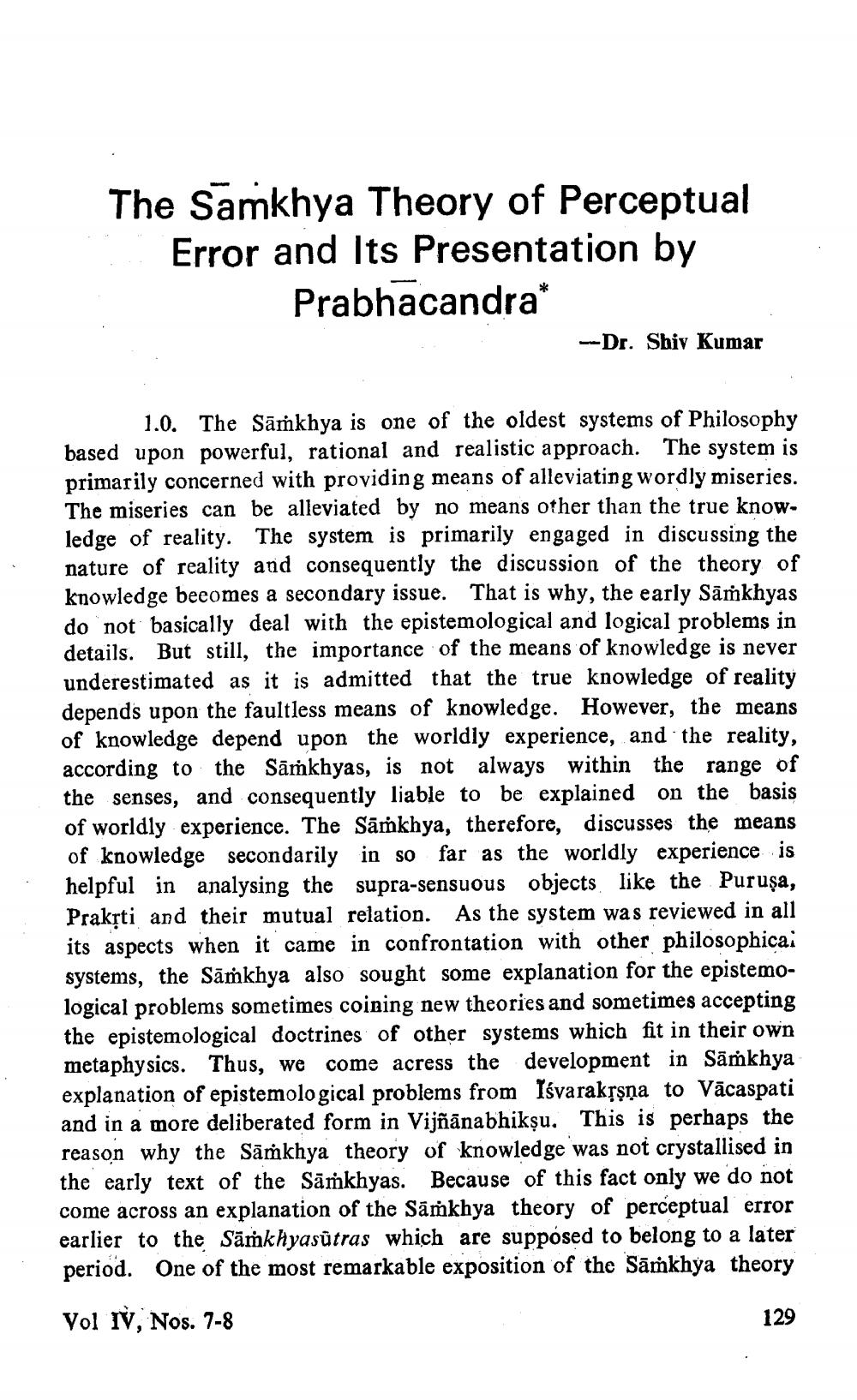________________
The Samkhya Theory of Perceptual Error and Its Presentation by Prabhacandra*
--Dr. Shiv Kumar
1.0. The Samkhya is one of the oldest systems of Philosophy based upon powerful, rational and realistic approach. The system is primarily concerned with providing means of alleviating wordly miseries. The miseries can be alleviated by no means other than the true knowledge of reality. The system is primarily engaged in discussing the nature of reality and consequently the discussion of the theory of knowledge becomes a secondary issue. That is why, the early Samkhyas do not basically deal with the epistemological and logical problems in details. But still, the importance of the means of knowledge is never underestimated as it is admitted that the true knowledge of reality depends upon the faultless means of knowledge. However, the means of knowledge depend upon the worldly experience, and the reality, according to the Samkhyas, is not always within the range of the senses, and consequently liable to be explained on the basis of worldly experience. The Samkhya, therefore, discusses the means of knowledge secondarily in so far as the worldly experience is helpful in analysing the supra-sensuous objects like the Purusa, Prakṛti and their mutual relation. As the system was reviewed in all its aspects when it came in confrontation with other philosophical systems, the Samkhya also sought some explanation for the epistemological problems sometimes coining new theories and sometimes accepting the epistemological doctrines of other systems which fit in their own metaphysics. Thus, we come acress the development in Saṁkhya explanation of epistemological problems from Isvarakṛṣṇa to Vacaspati and in a more deliberated form in Vijñānabhikṣu. This is perhaps the reason why the Samkhya theory of knowledge was not crystallised in the early text of the Samkhyas. Because of this fact only we do not come across an explanation of the Samkhya theory of perceptual error earlier to the Saṁkhyasutras which are supposed to belong to a later period. One of the most remarkable exposition of the Samkhya theory
Vol IV, Nos. 7-8
129




